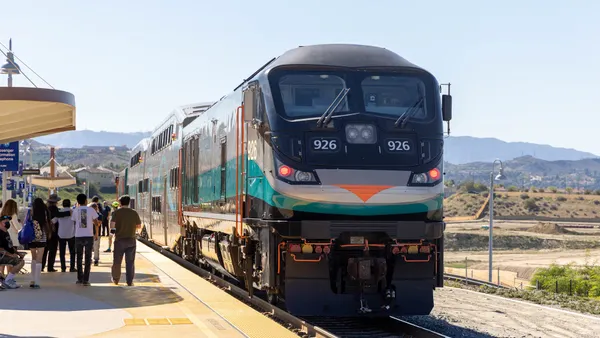Dive Brief:
- TransitCenter created a visual reference tool, Transit Insights, to measure and compare transit ridership trends in U.S. cities.
- The site — currently in its public beta testing state — shows users public transit ridership over time in selected cities and allows comparisons between cities. It also displays changes over time in stats such as each city's population and density, gas prices, transit fare, transit operating expenses and miles between transit mode failures.
- The tool eliminates the need to examine information from multiple databases by combining data from the U.S. Census Bureau, the Federal Transit Administration's (FTA) National Transit Database and route maps from Transitland.
Dive Insight:
Transit ridership has dipped nationally in recent years, but there are some areas where it has increased. Even neighboring cities in the same region — TransitCenter uses the Ohio examples of Columbus and Cleveland — experience divergent trends. Examining these trends and figuring out cities' respective challenges and successes can help city leaders and staff develop plans for improvement in their own communities.
Transit Insights already has revealed some national and localized transit trends. For example, from 2012 to 2017 transit ridership only increased in about 25% of America's largest urban areas, with Seattle and Phoenix experiencing the fastest growth. TransitCenter notes that both of those cities also had rapid population growth during that time. Another trend is that transit speeds have slowed down in many cities, in part due to buses getting caught in worsening street congestion.
The data needed to reach such conclusions is generally available but often is contained in several places, making it time-consuming to aggregate. Transit Insights makes it easier to access multiple databases at once and could help with realizing causation for both negative and positive transit ridership trends. The map format helps people to visualize the data in a recognizable and comprehensive configuration. This kind of visualization often is an easier way for humans to digest information than by perusing raw data sets and lists.











